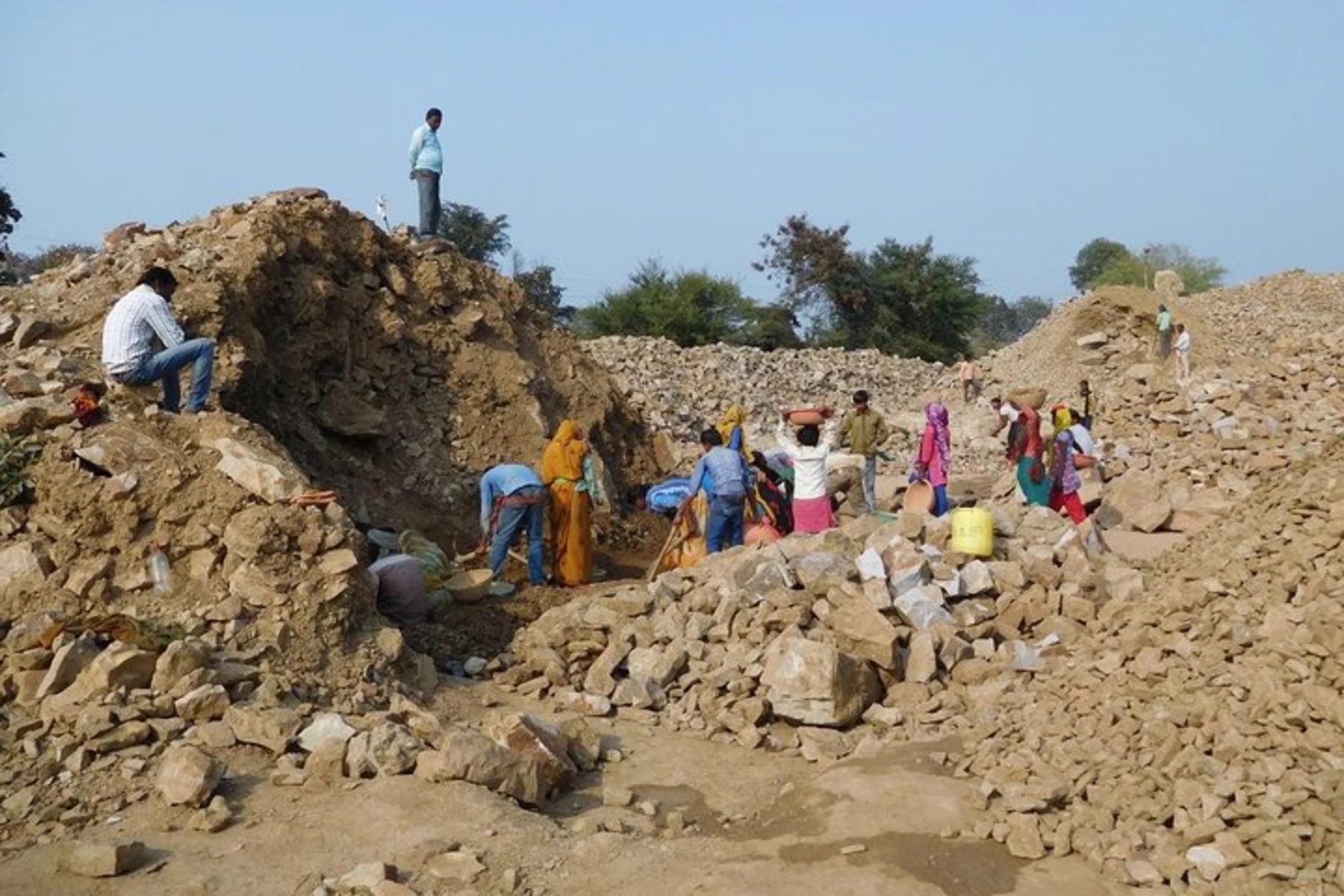Tucked away in the rural expanse of Madhya Pradesh, the district of Panna is known for its diamonds, but it is also a place where grinding poverty, unemployment, and water scarcity shape daily life. Despite the challenges of living in one of India’s most underdeveloped regions, the residents of Panna have long maintained a close connection with the earth beneath their feet, searching for the precious gems that may one day change their fortunes.
For thousands of years, India was the world’s only source of diamonds. While that dominance has since waned with the discovery of diamonds in Brazil, South Africa, and elsewhere, Panna remains one of the few places in India where diamonds can still be found. The region’s history as a hub for diamond hunting continues to draw hopeful miners, despite the dwindling reserves and the increasingly difficult conditions they face.
One such miner is Prakash Sharma, a 67-year-old man who has spent the last 50 years of his life in pursuit of diamonds. “I feel sick if I don’t search for diamonds. It’s like a drug,” he says, describing a passion that has defined his life. Sharma’s journey began in 1974, following in the footsteps of his father, a respected diamond hunter in their village. Not long after starting out, Sharma struck gold—or rather, diamonds—when he discovered a six-carat stone. That early success set him on a lifelong path of diamond hunting, a pursuit he continues to this day.
The diamond mining industry in Panna is a mix of large-scale, government-controlled operations and smaller, informal mining efforts. The Majhgawan mine, operated by the state-run National Mineral Development Corporation (NMDC), is the only mechanized diamond mine in India and has produced over 1.3 million carats of diamonds since it began operations in 1968. However, for most of the residents of Panna, diamond hunting involves leasing small plots of land from the government at nominal rates and hoping for a lucky break.
Unfortunately, years of over-mining have taken their toll, and the large, rare diamonds that once characterized the region’s mines are now a rarity. Yet, despite the odds, thousands of miners continue to dig, driven by the dream of finding a valuable gem that could change their lives. The process is physically demanding and involves long hours spent sifting through gravel, washing and drying it, and carefully examining it for any signs of diamonds. Families often work together, with multiple generations taking part in the hunt for gems.
When diamonds are found, they must be submitted to the government’s diamond office for evaluation. The stones are then auctioned, and after taxes and royalties are deducted, the remaining profits are given to the miners. The process can be slow, and many miners grow frustrated with the long wait times, but the potential rewards are too great to ignore. For some miners, diamond hunting is a family tradition, passed down through the generations. Shyamlal Jatav, 58, is one such miner. His grandfather was a diamond hunter, and now his son balances his schoolwork with part-time work in the mines. Although the diamonds his grandfather found were worth far less than those mined today, the tradition has continued, driven by the hope of finding a stone that could fetch millions of rupees.
For some, that hope becomes a reality. In July, laborer Raja Gound discovered a 19.22-carat diamond after more than a decade of mining. The gem sold for approximately 8 million rupees ($95,000), allowing Gound to pay off his debts and improve his financial situation. Stories like Gound’s are rare, but they serve as a reminder of the transformative power of diamonds, inspiring thousands of miners to continue their search despite the hardships they face.
India’s history in the diamond industry stretches back more than 3,000 years, and even though the country no longer dominates the global market, Panna’s role as a source of diamonds remains significant. However, much of the diamond trade in Panna operates outside the formal system. Many miners, seeking to avoid taxes and the long wait times associated with government auctions, sell their finds on the black market. While it is difficult to measure the extent of the illegal trade, it is widely acknowledged to be a significant part of the region’s diamond economy.
Ravi Patel, Panna’s mining officer, notes that the number of diamonds submitted for government auctions has dramatically declined in recent years. In 2016, the government received over 1,100 diamonds for auction; by 2023, that number had fallen to just 23. Patel attributes the decline to increased restrictions on mining in certain areas, particularly those within the Panna Tiger Reserve. The reserve, which is home to over 50 tigers, has been the focus of conservation efforts, resulting in the designation of large areas of forested land as off-limits to miners.
These restrictions have forced many miners out of the most productive areas, but for some, the lure of diamonds is too strong to resist. Despite the risks, miners continue to operate in the buffer zones of the reserve, facing severe penalties if caught. The combination of dwindling diamond reserves and stricter regulations has made diamond hunting more difficult than ever, yet the hope of finding a life-changing stone keeps miners coming back to the mines.
For others, diamond hunting represents a new beginning. Prakash Majumdar turned to diamond mining in 2020 after the Covid-19 pandemic cost him his job. Within a month, he found his first diamond, valued at 2.9 million rupees. That find allowed him to move his family into a concrete house and secure a better future. Today, Majumdar is the elected head of his village, but he continues to dig for diamonds, driven by the same hope that sustains so many others in Panna.
Panna’s diamond mines may be running dry, but the dreams they inspire remain as powerful as ever. For the miners who spend their days sifting through gravel, the possibility of finding a diamond is not just a way to escape poverty—it is a path to a better life. As long as that dream endures, the diamond hunters of Panna will continue their search, guided by the hope that their fortunes lie buried just beneath the surface.






